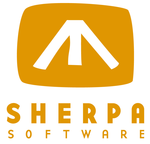What Is Electronic Discovery Software?
Software specifically made to assist legal practitioners in managing and reviewing vast amounts of electronically stored information (ESI) for legal purposes is known as electronic discovery, or eDiscovery, software. Emails, papers, posts on social media, and other types of electronic data can all be considered ESI. Helping to identify, preserve, gather, review, and produce ESI that might be pertinent to legal proceedings is one of the main goals of eDiscovery software.
Internal audits, regulatory investigations, and civil litigation are a few examples of this. Without technology, handling electronic data can be a difficult and time-consuming task. eDiscovery software can help speed this process. Along with ensuring legal compliance, it can also assist cut expenses and boost productivity.
Data analytics, keyword searching, data filtering, and tools for document review and creation are some of the typical characteristics of eDiscovery software. With the aid of these technologies, users may process and analyze vast amounts of data more rapidly and precisely, which facilitates the identification of important facts and supporting evidence. The particular demands and specifications of your company or legal team should be taken into account when searching for eDiscovery software.
The kind of data being handled, the scope and intricacy of cases, and the necessary degree of security and data protection are some examples of factors to take into account. To guarantee the software's effective installation and operation, it's also critical to pick a trustworthy software supplier that provides technical assistance, frequent upgrades and maintenance, and training materials.
What Are The Recent Trends In Electronic Discovery Software?
Technology breakthroughs and shifting legal constraints have led to a continuous evolution in the field of electronic discovery, or eDiscovery. In order to make wise judgments for their company, purchasers must thus keep up with the most recent developments in electronic discovery software.
1. Solutions Based On The Cloud: The use of cloud-based solutions is one of the most important developments in eDiscovery software. The emergence of cloud computing provides eDiscovery with greater flexibility and scalability, enabling enterprises to safely store and retrieve vast volumes of data. As more businesses place a higher priority on remote work and data accessibility, this trend is anticipated to continue.
2. Artificial Intelligence: There is no denying the influence of artificial intelligence (AI) technologies now present in the eDiscovery field. AI-powered eDiscovery software can eliminate human mistake, automate data processing, and cut down on time and expense. AI is significantly contributing to the simplification of eDiscovery procedures with its sophisticated capabilities, such as predictive coding and data analytics.
3. Compatibility With Mobile Devices: Mobile-friendly eDiscovery software is becoming more and more popular as mobile devices are used more and more for both personal and business reasons. This trend gives customers more freedom and convenience by enabling them to access, analyze, and evaluate data on their mobile devices.
4. Features Of Collaboration: Successful eDiscovery requires effective teamwork, particularly when there are several parties involved. Collaboration tools like file sharing, commenting, and real-time messaging are becoming more and more common in eDiscovery software. These characteristics make it possible for legal teams to collaborate and communicate easily, which increases accuracy and efficiency.
5. Security And Privacy Of Data: In eDiscovery, data security and privacy have always been of utmost importance. The necessity for eDiscovery software with strong security features has increased because to the ongoing rise in cyber threats. To safeguard sensitive data, top eDiscovery systems provide end-to-end data encryption, sophisticated access controls, and adherence to data privacy laws. Keeping these trends in mind will help you choose the best eDiscovery software for your company as you traverse the ever evolving field of electronic discovery.
Benefits Of Using Electronic Discovery Software
Software for electronic discovery (eDiscovery) is a potent instrument made to assist companies and legal teams in effectively managing and processing vast amounts of digital data for legal or regulatory requirements. By automating and streamlining the intricate process of locating, gathering, and evaluating pertinent electronic data, this software helps firms save time and money while lowering the risks involved with manual data handling.
The capacity of electronic discovery software to greatly expedite the data collecting and evaluation process is one of its main advantages. This software can be extremely helpful in situations where companies need to adhere to stringent regulatory standards or deadlines. Legal teams can save countless hours of manual labor by using the software's sophisticated search and filtering features, which enable it to swiftly sort through millions of documents to find pertinent information.
Furthermore, the possibility of human error that frequently accompanies manual data management is eliminated by eDiscovery software. Errors can occur during manual data review, including the inadvertent deletion of vital data or the omission of key information. Electronic discovery software can accurately and efficiently analyze massive volumes of data without human intervention thanks to sophisticated algorithms and machine learning capabilities. This ensures a greater degree of accuracy and reduces the possibility of expensive errors.
Additionally, eDiscovery software can assist companies in controlling the expenses related to court cases. The time and resources required to collect and examine electronic data can be greatly decreased by the software's effective data management features. Lower legal fees and costs may result from this, which would make the process more affordable for companies overall.
The capacity of eDiscovery software to guarantee adherence to legal and regulatory obligations is another significant advantage. This software lowers the possibility of unauthorized access to private data by including features like data encryption and safe data storage. Businesses may more easily prove compliance and steer clear of legal or regulatory repercussions thanks to the software's audit trails and reporting features, which also offer an exact record of the complete data review process.
Important Factors To Consider While Purchasing Electronic Discovery Software?
There are a number of crucial considerations to make when thinking about investing in electronic discovery software. These elements will assist you in selecting the best software to satisfy your particular demands.
1. Data Sources And Types: The software's ability to handle different kinds and sources of data should be the first consideration. Make that the program can handle a variety of data forms, such as documents, emails, photos, videos, and audio files. Additionally, it should support data that is kept in several places, including local servers, cloud networks, and mobile devices.
2. Search And Analysis Features: A strong eDiscovery program has to offer sophisticated search and analysis features. In addition to grouping, categorization, and predictive coding, it should be capable of conducting keyword and concept searches. This will cut down on review time and expenses while assisting you in precisely and swiftly identifying pertinent data.
3. Data Security: When working with sensitive and private data, data security is essential. Strong security features should be included in the eDiscovery program to guard against loss, alteration, and illegal access to your data. To protect your data, look for features like multi-factor authentication, access controls, and encryption.
4. EDRM Compatibility: An industry-standard framework for eDiscovery process management is the Electronic Discovery Reference Model (EDRM). Make sure the eDiscovery program you use is EDRM compatible so that it can be easily integrated with other tools and systems in your workflow.
5. Scalability: The eDiscovery software should be able to grow with your data and business requirements. It should be able to support numerous users and manage massive data volumes without experiencing any performance issues. This will guarantee that your software investment is secure for the future.
6. User-Friendly Interface: The eDiscovery software should have an easy-to-use interface. It should have capabilities like drag and drop, dashboards that can be customized, and reports that are simple to use. Both expert and non-technical users will save time and effort with an intuitive interface.
7. Cost: The features, level of complexity, and vendor all affect how much eDiscovery software costs. Choose software that provides the functionality you require at a cost that fits your budget. Additionally, consider any extra expenses for things like training, support, and maintenance.
8. Customer Support: Having dependable customer support from the eDiscovery software vendor is crucial in the event of any technical problems or questions. Choose software that provides resources like user manuals and online tutorials, as well as round-the-clock assistance and different communication channels. You may choose the best electronic discovery software for your organization's demands, budget, and security requirements by taking these considerations into account.
What Are The Key Features To Look For In Electronic Discovery Software?
For modern enterprises and organizations to effectively handle electronic data and expedite the e-discovery process, electronic discovery software is an essential tool. But with so many options on the market, it can be difficult for consumers to make an informed choice. Here are the essential characteristics to search for in Electronic Discovery Software to make sure you spend your money on the best program for your requirements:
1. Search Capabilities: Electronic discovery software's main purpose is to search and filter through massive amounts of data. Seek out software with sophisticated search features, such as idea, keyword, and metadata searches. Additionally, the program must to be able to search across a variety of file formats, such as documents, multimedia files, and emails.
2. Document Review: By providing capabilities like bulk tagging, redaction, and collaboration tools, electronic discovery software should facilitate effective document review. To improve data organization, the program should also be able to generate editable document categories and folders.
3. Data Preservation: Data preservation is one of the key components of electronic discovery software. Throughout the e-discovery process, the software should guarantee the security and integrity of the data. It should be able to stop tampering and maintain data in its original format.
4. Data Processing: An essential phase in e-discovery is data processing. Seek program that can do de-duplication and near-duplication analysis, extract text and metadata, and handle a variety of file types. The program should also be able to manage massive amounts of data and generate accurate and trustworthy results.
5. Data Analytics: Users may rapidly extract insights from their data with the use of sophisticated data analytics features. Seek out software with data mining tools like as clustering, visual analytics, predictive coding, and others. Users may review big data sets more quickly and effectively with the aid of these features.
6. Data Production: Depending on the requirements of e-discovery, electronic discovery software should be able to generate data in a variety of forms. The program should be able to produce documents in industry-standard formats like PDF or TIFF and load files for well-known e-discovery platforms.
7. User-Friendly Interface: The e-discovery process will be more effective with an intuitive and simple-to-use interface. Choose software with an intuitive user interface that includes adjustable layouts, keyboard shortcuts, and drag and drop functionality.
8. Legal Hold Management: In electronic discovery, data preservation and retention are essential. To make sure that essential information is kept safe during the e-discovery process, look for software with integrated legal hold management capabilities.
9. Integration Alternatives: To minimize manual labor and expedite the process, Electronic Discovery Software ought to include integration alternatives. Seek out software that easily connects with other tools, such as e-discovery platforms, email platforms, and document management systems.
10. Data Security: Any firm should prioritize data security, particularly when it comes to the e-discovery process. Seek out software that has strong data security features, such as data backups, access limits, and encryption.
Why Do Businesses Need Electronic Discovery Software?
In the current digital era, electronic discovery software, or eDiscovery software, is a vital tool for companies. Businesses are finding it more difficult to manage and retrieve electronic data—such as emails, documents, and social media posts—during legal processes or regulatory inquiries as a result of its widespread use.
Software for electronic discovery can help with this. Simplifying the process of gathering, organizing, and examining electronic material pertaining to a case or inquiry is the main goal of electronic discovery software. This entails locating and gathering pertinent information, maintaining its accuracy, and finally presenting it in a manner that is acceptable in court.
The sheer amount and complexity of electronic data is one of the main reasons why companies use electronic discovery tools. Businesses are creating and keeping an increasing amount of information in a variety of formats and across several platforms as a result of the ongoing advancements in technology. Finding and organizing this data can be difficult and time-consuming due to its dispersed nature, particularly when legal actions are involved.
Businesses may incur significant time and financial costs as a result of not having electronic discovery tools. Without the right resources, companies could find it difficult to meet their legal responsibilities, which could result in penalties and harm to their brand. Moreover, eDiscovery software is an essential investment because the conventional manual methods for handling electronic data are no longer adequate or economical.
The capacity of electronic discovery software to guarantee adherence to rules and laws is another essential feature. Businesses want a software solution that can efficiently handle and safeguard sensitive data during legal procedures due to the constantly evolving landscape of data privacy and security rules. Features like user authorization and data encryption provided by electronic discovery software guarantee adherence to pertinent laws and regulations.
The accuracy and efficiency of the discovery process can also be enhanced with the use of electronic discovery tools. Businesses may swiftly find pertinent data and eliminate redundant or irrelevant information by using advanced search and analysis technologies. This minimizes the possibility of overlooking important pieces of evidence that could affect a case's outcome in addition to saving time.
How Much Time Is Required To Implement Electronic Discovery Software?
The size and complexity of the data in your business determine how long it takes to adopt electronic discovery tools. On average, though, it may take a few weeks to several months. Data mapping, which entails locating and classifying every data source in your company, is the initial stage of putting electronic discovery tools into practice. Depending on the amount and type of data, this procedure may take a few weeks to several months.
The program must then be set up to satisfy your unique requirements and demands. This entails establishing procedures, security protocols, and user accounts. Configuration can take anywhere from a few days to many weeks. The data needs to be fed into the system when the software has been configured. The data must be uploaded, indexed, and categorized during this procedure.
The volume of data being processed and the network speed of your company will determine how long this stage takes. Another essential step in the implementation process is providing training on how to utilize the software and its capabilities. Depending on the software's complexity, this could take a few days to a week.
Depending on a number of variables, the overall time required to install electronic discovery software might range from a few weeks to several months. Close collaboration with the software provider is necessary to guarantee a seamless and effective implementation procedure.
What Is The Level Of Customization Available In Electronic Discovery Software?
Different degrees of customisation are available in electronic discovery software, enabling users to adapt the program to their unique requirements and tastes. Customization choices can vary from basic capabilities to sophisticated ones that give you a great deal of control over the entire e-discovery process, depending on the software supplier. Creating and saving custom searches is one of the most popular ways to customize e-discovery software.
This increases efficiency and saves time by enabling users to quickly and easily retrieve specific information they commonly need. Date ranges, keywords, and other specific requirements for a given case or project can all be included in customized search parameters. Creating custom fields and tags in e-discovery software offers an additional degree of customization. This enables users to classify and arrange documents according to the criteria that are most pertinent to their particular situation.
A law firm working on a lawsuit involving medical records, for instance, might designate special fields for patient names, treatment dates, and certain medical problems. This degree of personalization guarantees that all pertinent data may be found and accessed with ease. Workflows for document reviews can also be customized using some e-discovery applications.
This enables users to designate papers to particular reviewers, define custom review stages, and monitor progress. Organizations that manage high document volumes and need a streamlined review process must have this degree of customisation. Lastly, sophisticated e-discovery software might provide code or database modification. This enables more complex and in-depth customisation choices, like process automation and the creation of unique data fields.
This degree of personalization is usually only available to seasoned users or businesses with intricate e-discovery requirements. It's crucial to evaluate the degree of customization choices offered by e-discovery software and decide which ones are required for your particular project or case. Users can customize their e-discovery process to meet their specific needs by selecting software with the right amount of customization, which improves document production and review accuracy and efficiency.
Which Industries Can Benefit The Most From Electronic Discovery Software?
For many sectors that deal with legal issues, compliance, and data management, electronic discovery software, or eDiscovery software, has become a vital tool. Organizations may effectively gather, handle, and evaluate data for internal audits, regulatory inquiries, and court proceedings thanks to this robust software. What sectors stand to gain the most from electronic discovery software, then? Let's investigate.
1. Legal Sector: The most evident user of electronic discovery software is the legal sector. eDiscovery software is used by law firms and internal legal teams to manage cases, collect evidence, and get ready for trials. Traditional methods of discovery, such document inspection, are no longer effective due to the growing digitization of information. Lawyers can swiftly and precisely locate pertinent material by searching through vast amounts of data, such as emails, social media posts, and other electronic documents, using electronic discovery software.
2. Healthcare Sector: The healthcare sector handles a lot of sensitive data, such as insurance claims, clinical study data, and patient information. Patient care depends on this data, and any problems with compliance with the law could have dire repercussions. By effectively managing and assessing data for legal proceedings and regulatory audits, electronic discovery software can assist healthcare institutions in maintaining compliance. In the event of litigation, it can also help with eDiscovery and data retention.
3. Government Agencies: Government agencies handle a lot of data that must be maintained and examined for legal purposes, from tax audits to lawsuits. By automating the data gathering, processing, and review process, electronic discovery software can help these organizations save time and money. Additionally, it offers a consolidated, safe platform for handling private data.
4. Finance And Banking Sector: This sector is highly regulated and handles a lot of sensitive data, such as trade data, customer information, and financial records. These firms can maintain regulatory compliance and provide prompt, correct responses to court inquiries by using electronic discovery tools. Fraud detection and investigation are further aided by the software's sophisticated analytics and prediction features.
5. Human Resources: Workplace investigations and employment cases are growing more frequent. HR departments can find and examine electronic evidence pertaining to these situations more readily with the use of electronic discovery tools. Additionally, it can help with data protection and compliance, particularly in sectors like healthcare and finance that have stringent rules.
Conclusion
In conclusion, any firm that handles a lot of electronic data must invest in dependable electronic discovery software. It guarantees adherence to legal requirements in addition to enhancing the discovery process's effectiveness and precision. The unique requirements and difficulties of your company should be taken into account when choosing an electronic discovery program, in addition to the program's features and functionalities.
It is important to carefully consider elements like data administration, search and review capabilities, and data security. Selecting a trustworthy and knowledgeable supplier with a history of producing top-notch eDiscovery solutions is also crucial. In addition to guaranteeing the best result for your company, this will give you the support and direction you need during the eDiscovery process.
All things considered, any firm hoping to efficiently handle and examine electronic data would be well advised to invest in a strong electronic discovery software solution. You can expedite your eDiscovery procedure and increase the effectiveness and precision of your legal actions by carefully weighing your options and choosing the best option.






















